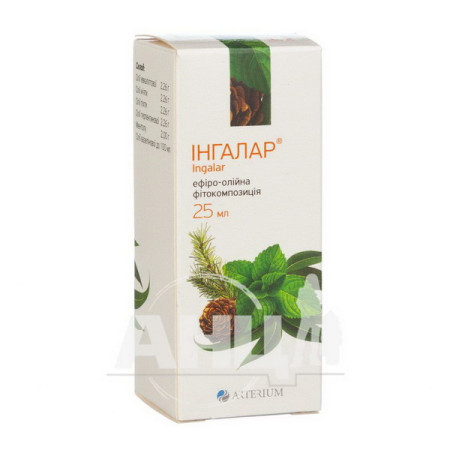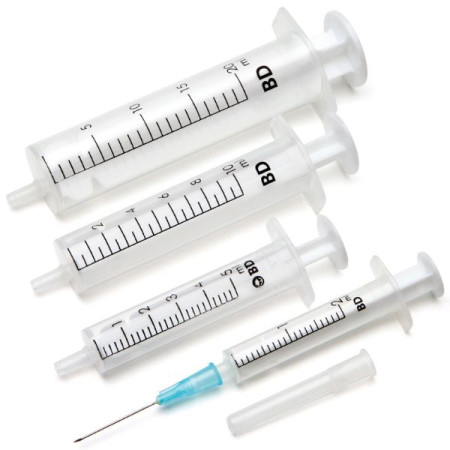Ascorbic acid solution for injection 5% ampoule 2 ml No. 10

Translation of the instructions can be
ASCORBIC ACID solution for injection 50 mg/ml, solution for injection 100 mg/ml
Instruction
For medical use of the medicinal product
Ascorbic acid
(Ascorbic acid)
Composition:
Active ingredient: ascorbic acid;
1 ml of solution contains 50 mg or 100 mg of ascorbic acid;
excipients: sodium bicarbonate, sodium metabisulfite (E 223), disodium edetate, water for injections.
Dosage form.
Solution for injection.
Main physicochemical properties: 5% solution - transparent colorless or slightly yellowish liquid; 10% solution - transparent liquid from colorless to yellowish.
Pharmacotherapeutic group.
Simple preparations of ascorbic acid. Ascorbic acid (vitamin C). ATC code a11g a01.
Pharmacological properties.
Pharmacodynamics.
Ascorbic acid (vitamin C) is a water-soluble vitamin that contributes to the optimal course of tissue metabolism. It takes an active part in redox reactions, forming a hydrogen proton transfer system with dehydroascorbic acid, exhibits antioxidant properties, thereby ensuring the stability of cell membranes. It takes part in the synthesis of the main substance of the connective tissue of the vascular wall, thus preventing the development of hemorrhagic diathesis. It is not synthesized in the human body. With insufficient intake of ascorbic acid with food, bleeding gums and mucous membranes develop. It takes part in glucose metabolism, cholesterol catabolism, and the synthesis of steroid hormones. During stress reactions, the content of ascorbic acid in the body, and in the adrenal gland tissue in particular, is significantly reduced, which confirms the participation of ascorbic acid in adaptation reactions. It is capable of providing anti-anemic effects due to its effect on iron metabolism. Restores trivalent iron to divalent iron, which is transported with the bloodstream.
Pharmacokinetics.
Ascorbic acid after parenteral administration easily penetrates into leukocytes, platelets, and then into all tissues; accumulates mainly in organs with an increased level of metabolic processes, in particular in the tissues of the adrenal glands. In the tissues it is found both in a free state and in the form of compounds. It is excreted from the body with urine both in unchanged form and in the form of metabolites.
Alcohol consumption and smoking accelerate the destruction of ascorbic acid (conversion into inactive metabolites), sharply reducing its reserves in the body.
Clinical characteristics.
Indication.
Hypovitaminosis C; scurvy, bleeding (uterine, pulmonary, nasal, hepatic), hemorrhagic diathesis, bleeding as radiation sickness syndrome, various intoxications and infectious diseases, nephropathy of pregnant women, Addisonian crisis, overdose of anticoagulants, bone fractures and slow-granulating wounds, various dystrophies, pregnancy and breastfeeding, increased mental load and heavy physical labor.
Contraindication.
Increased individual sensitivity to ascorbic acid or to any of the auxiliary components of the drug; diabetes mellitus, increased blood clotting, tendency to thrombosis, thrombophlebitis, urolithiasis (including hyperoxaluria), renal failure, progressive malignant diseases, hemochromatosis, thalassemia, polycythemia, leukemia, sideroblastic anemia, sickle cell anemia, glucose-6 phosphate dehydrogenase deficiency.
Interaction with other drugs and other types of interactions.
Ascorbic acid increases the blood concentration of salicylates (increases the risk of crystalluria), ethinylestradiol, benzylpenicillin and tetracyclines, reduces the level of oral contraceptives in the blood. increases the excretion of drugs that have an alkaline reaction (including alkaloids). in high doses increases the renal excretion of mexiletine.
Tetracycline and acetylsalicylic acid increase the excretion of ascorbic acid in the urine.
When administered simultaneously with salicylates and short-acting sulfonamides, the risk of urinary calculi formation increases.
High doses of ascorbic acid may lower urinary pH, resulting in decreased tubular reabsorption of amphetamine and tricyclic antidepressants used concomitantly.
Increases iron excretion in patients taking deferoxamine.
Reduces the anticoagulant effect of coumarin and heparin derivatives, the effectiveness of antibiotics. Increases the neutralization and total clearance of ethyl alcohol.
Reduces the chronotropic effect of isoprenaline and the therapeutic effect of phenothiazine derivatives.
When used simultaneously with barbiturates and primidone, the excretion of ascorbic acid in the urine increases.
When using ascorbic acid in large doses and simultaneously consuming alcohol, a disulfiram-like reaction may develop.
Application features.
When used in large doses, monitoring of kidney function, blood pressure (stimulation of the formation of corticosteroids by ascorbic acid), as well as pancreatic function (suppression of the insular apparatus) is necessary.
The use of large doses of ascorbic acid may affect the results of some laboratory tests: a false-positive result of the test for sugar in the urine and a negative result of the test for occult blood in the stool, as well as a decrease in the concentration of lactate dehydrogenase and aminotransferases in the blood serum.
Patients with elevated iron levels in the body should use ascorbic acid in minimal doses.
Patients on a low-sodium diet should not be prescribed high doses of the drug.
The administration of ascorbic acid to patients with rapidly proliferating and extensively metastasizing tumors may exacerbate these processes. Patients undergoing chemotherapy should be administered the drug no earlier than 1-3 days after chemotherapy (depending on the half-life of the anticancer drug), as there is no clinical data on a possible interaction.
Use during pregnancy or breastfeeding.
The minimum daily requirement for ascorbic acid in the 2nd and 3rd trimesters of pregnancy is approximately 60 mg. Ascorbic acid penetrates the placental barrier. It should be borne in mind that the fetus can adapt to high doses of ascorbic acid taken by a pregnant woman, and then the newborn may develop ascorbic disease as a "withdrawal" reaction. Therefore, the drug should not be prescribed in high doses during pregnancy, except in cases where the potential benefit to the mother outweighs the possible risk to the fetus.
The minimum daily requirement for ascorbic acid during breastfeeding is 80 mg. A mother's diet containing an adequate amount of ascorbic acid is sufficient to prevent deficiency in the newborn. Ascorbic acid passes into breast milk. Theoretically, there is a threat to the child if the mother takes high doses of ascorbic acid (during breastfeeding it is not recommended to exceed the daily requirement for ascorbic acid). If it is necessary to prescribe increased doses of the drug, breastfeeding should be discontinued.
The ability to influence the reaction speed when driving vehicles or other mechanisms.
The drug in recommended doses does not affect the ability to drive or operate other mechanisms.
Method of administration and doses.
It is administered intravenously by jet or drip and intramuscularly.
Intravenously injected over 1-3 minutes. For intravenous drip administration, a single dose of the drug is dissolved in 50-100 ml of 0.9% sodium chloride solution and administered by slow intravenous infusion at a rate of 30-40 drops per minute.
Intramuscularly injected deep into the muscle.
Doses are set individually, taking into account the nature and severity of the disease.
Adults and children over 12 years of age are usually prescribed 50-150 mg per day. In case of poisoning, the daily dose is increased to 500 mg. The maximum single dose is 200 mg, daily - 1 g.
Children under 12 years of age are prescribed intravenously in a daily dose of 5-7 mg/kg of body weight in the form of a 5% solution (0.5-2 ml). Usually for children the daily doses are: under 6 months - 30 mg, 6-12 months - 35 mg, 1-3 years - 40 mg, 4-10 years - 45 mg, 11-12 years - 50 mg. The maximum daily dose is 100 mg.
Special patient groups. For patients with recurrent kidney stones, the daily dose of ascorbic acid should not exceed 100-200 mg. For patients with severe or end-stage renal failure (patients on dialysis), the daily dose of ascorbic acid should not exceed 50-100 mg. For patients with glucose-6-phosphate dehydrogenase deficiency, the daily dose of ascorbic acid should not exceed 100-500 mg.
Children.
For the use of the drug in children, see the "Method of administration" section.
Overdose.
Large doses of ascorbic acid can cause gastrointestinal upset, including diarrhea, and can lead to hyperoxaluria and the formation of oxalate stones. Doses above 600 mg per day have a diuretic effect.
With intravenous administration in high doses, there may be a threat of abortion.
Treatment: discontinuation of the drug, symptomatic therapy.
Adverse reactions.
Ascorbic acid is generally well tolerated, but the following side effects may develop.
Disorders of the blood and lymphatic system: with prolonged use in high doses - thrombocytosis, hyperprothrombinemia, thrombocytopenia, erythrocytopenia, neutrophilic leukocytosis.
Neurological disorders: headache, feeling of fatigue, with prolonged use in high doses - sleep disturbances, increased excitability of the central nervous system.
Gastrointestinal disorders: nausea, diarrhea, stomach cramps.
Urinary system disorders: hyperoxaluria; with prolonged use in high doses - damage to the glomerular apparatus of the kidneys, formation of kidney stones from calcium oxalate.
Skin and subcutaneous tissue disorders: very rarely - skin rash, skin hyperemia, itching, redness, urticaria, edema.
Vascular disorders: decreased capillary permeability, deterioration of tissue trophism; with prolonged use in high doses - myocardial dystrophy, increased blood pressure, development of microangiopathies.
General disorders: chills, fever.
Pregnancy: with intravenous administration in high doses - the threat of abortion.
Immune system disorders: very rarely - anaphylactic shock.
Expiration date.
2 years.
Storage conditions.
Store in the original packaging at a temperature not exceeding 25 °C.
Keep out of reach of children.
Incompatibility.
Ascorbic acid has a high redox potential, as a result of which it can change the chemical composition of other drugs. Therefore, when considering the possibility of use with other drugs, it is necessary to ensure their compatibility.
Packaging.
2 ml in ampoules. 10 ampoules in a pack with partitions; or 5 ampoules in a one-sided blister, 2 blisters in a pack, or 100 ampoules in a box with partitions.
Vacation category.
According to the recipe.
Producer.
Private Joint-Stock Company "Lekhim-Kharkiv".
Location of production and its address of place of business.
Ukraine, 61115, Kharkiv region, Kharkiv city, Severyna Pototskoho street, building 36.
There are no reviews for this product.
There are no reviews for this product, be the first to leave your review.
No questions about this product, be the first and ask your question.















